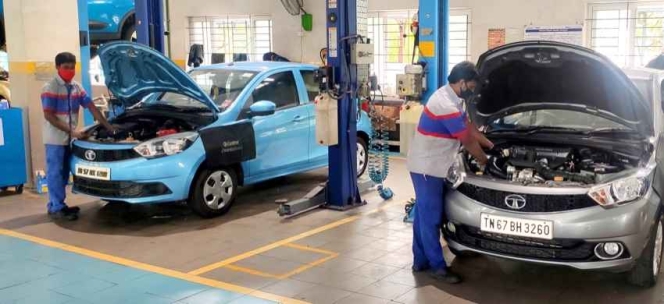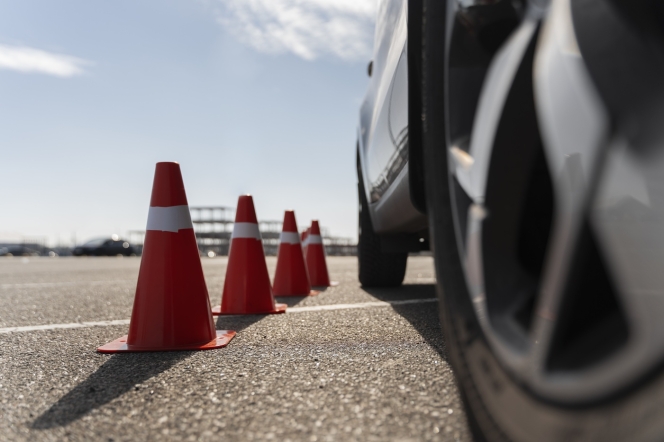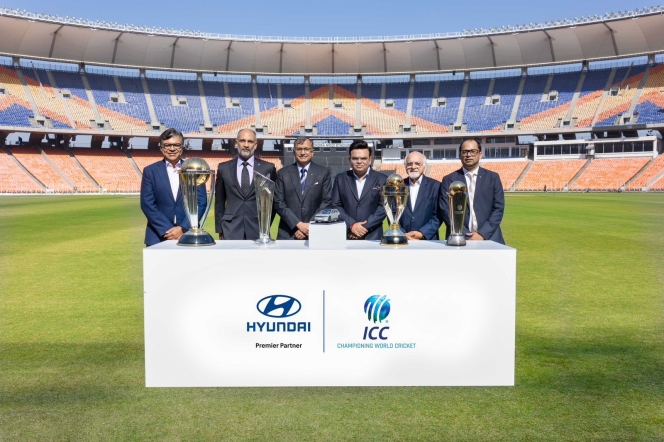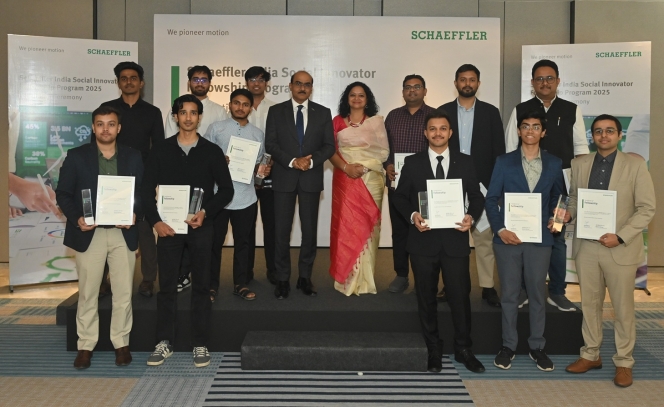Changing With Times Helped Tata Motors Respond Customer Service Better
- By MT Bureau
- December 18, 2020

Seeking details on how the Passenger Vehicle Business Unit of Tata Motors, like many other vehicle makers, faced several challenges from the aftermarket perspective during the lockdown and COVID-19 induced New Normal, the company spokesperson said, there were not many challenges as everything had been planned from their end well in time. However, during the initial days of lockdown, getting special permission from local authorities in certain markets was one challenge the company faced which was eventually resolved.
Tata Motors ensured that its customers and COVID frontline workers received seamless customer experience. As a part of its initiative, the company introduced tips to take care of their vehicles during lockdown along with breakdown assistance and hotline service, that was attending calls 24x7 to provide the necessary support. It also introduced an exclusive helpline for frontline COVID workers and healthcare professionals during the lockdown. Customers could dial the dedicated numbers for assistance in case of any emergency needs. The company has taken necessary approvals from local authorities to attend to vehicles safely and efficiently with all precautionary measures. It serviced 200 plus vehicles of COVID fighters such as doctors/police during the lockdown period across the country. To further support, it also extended the warranty and scheduled service period.
For all pending service appointments, the team called customers to ensure them that their vehicle was in safe hands. Given the relaxation in curbs, restarting of service appointments will be planned in a staggered manner to ensure sanitisation and social distancing to maintain utmost customer safety, the spokesperson said.
However, the average time to respond to customers’ call for repair/ service varied depending upon various factors. For service requests, customers could call the customer care number, where specialists were available to answer queries 24x7, he said. In the case of emergency roadside assistance, the company made arrangements that the services team reaches the location within 60 minutes under city limits and within 120 minutes on ghat roads and other places. The average time per service appointment depends on the type of job that needs to be done on the vehicle. For regular paid service it takes around three to four hours, and free services or minor check-ups are taken care of within 90 minutes, he said. “We have 633 workshops across the country, 444 dealer workshops and 189 TASCs (Tata Authorised Service Centres),” he added.
While these initiative are taken to cater to the requirements of the customers, the vehicle makers also face specific issues about increasing number of stock-keeping units, triggered by more models and variants being introduced. However, Tata Motors has been using a very sophisticated analytical tool to predict the consumption and stock accordingly. The planning for spare parts inventory is done at the dealerships to ensure that sufficient stock is available for all the models based on consumption pattern.
Skilling
Talking on the need to upskill the workforce at authorised service centres, the spokesperson said, upskilling is a continuous process to keep all the dealer workforce updated on the latest technological introductions in the new range of vehicles. “We have seven training centres across the country and are currently conducting regular online training sessions to ensure that our dealer manpower is well acquainted with the same,” he said.
With technological advancements in the cars increasing with every new model, the challenge is to match the service centres to cater to the emerging requirements. From a customer’s perspective, it is more convenient to operate any function with the click of a button or a touch screen. Therefore, from a service perspective, it has become easy to identify service requirements in the vehicle through the medium of a laptop, thereby resulting in faster repairs. “Tata Motors Passenger dealerships have a separate profile of DET (Diagnostic Expert cum trainer) who is skilled in identifying such service requirements and ensures that repairs take place faster and with accuracy. We do not see any challenges from a security perspective, as all technology and electronics in the vehicles undergo multiple tests before being launched,” he said.
Talking on sustainable initiatives, he said, “Earlier in September, the Tata Nexon became the first Indian car to be published on the prestigious International Dismantling Information System (IDIS) platform for End-of-Life Vehicles (ELV). With this achievement, Tata Motors reiterated its holistic commitment towards making the entire life cycle of its products sustainable, i.e. from the development of ultra-low/zero-emission vehicles to responsible dismantling and recycling of the vehicle at the final ELV stage. This milestone on the Nexon signifies the increasing commitment of Tata Motors to ‘End of Life’ across its range of vehicles and the beginning of sustained declaration of dismantling procedures across its entire range of vehicles that are complex with increasing technological content, though over the years commercial vehicles have achieved good levels of recyclability where dismantling procedures are better understood.” (MT)
- SIAM
- Society of Indian Automobile Manufacturers
- National Road Accident Reduction Challenge 2026
- Safe Journey
- Prashant K Banerjee
- Devashish Handa
- Suzuki Motorcycle India
SIAM Launches National Road Accident Reduction Challenge 2026 For Students
- By MT Bureau
- December 23, 2025

The Society of Indian Automobile Manufacturers (SIAM) has launched the National Road Accident Reduction Challenge 2026 under its ‘Safe Journey’ initiative. The competition invites undergraduate students across India to develop solutions aimed at improving road safety and reducing fatalities.
The challenge targets undergraduate students in teams of two to four. Participants are required to submit field-tested or ready-to-implement ideas across several themes:
- User-centric interventions
- Technology-driven safety
- Infrastructure improvement
- Evaluation and enforcement
Submissions must include a 15–20 slide concept deck backed by data validation, fieldwork, or prototypes. The deadline for nominations is 15 January 2026, with final projects due by 1 March 2026.
Shortlisted teams will present their projects to a jury consisting of representatives from SIAM, vehicle manufacturers (OEMs), transport authorities and NGOs. The winning team will be awarded a cash prize of INR 250,000 at the SIAM SAFE Annual Convention 2026.
Prashant K Banerjee, Executive Director, SIAM, said, “In India, around 485 people lose their life daily due to road accidents. India’s young minds have the power to drive real change on our roads. The National Road Accident Reduction Challenge 2026 is designed to channel their creativity, problem-solving skills, and sense of responsibility into practical interventions that can be implemented on the ground. By engaging students as partners in road safety, SIAM aims to foster a culture of accountability, innovation, and safer mobility for the nation.”
Devashish Handa, Executive Officer, Suzuki Motorcycle India (SMIPL), said, “Road safety is a key focus area of Suzuki Motorcycle India’s CSR efforts. We believe that student-led innovation can contribute meaningfully to safer mobility in India. Through SIAM’s National Road Accident Reduction Challenge 2026, we aim to strengthen road safety ethics among the young generation and encourage practical, on-ground interventions to help bring down road fatalities.”
- Hyundai Motor Company
- ICC
- International Cricket Council
- Hyundai Motor India
- Jay Shah
- Tarun Garg
- Jose Munoz
Hyundai Motor Becomes ICC Premier Partner For 2026–2027 Tournaments
- By MT Bureau
- December 23, 2025

South Korean automotive major Hyundai Motor Company has announced a partnership with the International Cricket Council (ICC), serving as a Premier Partner for tournaments between 2026 and 2027. The agreement covers six major ICC events across multiple formats, including the Men’s Cricket World Cup 2027.
The partnership grants Hyundai exclusive rights for the international cricket calendar. These include participation in matchday moments such as the coin toss, in-stadium branding and fan experiences.
The collaboration aligns with Hyundai Motor’s sports strategy, which focuses on sports in specific regions. Cricket has an audience of over 2 billion fans, providing the brand with a platform to connect with audiences in markets such as India. This deal marks a return to the sport for Hyundai, which previously collaborated with the ICC from 2011 to 2015.
Hyundai subsidiaries will collaborate to offer vehicle showcases, interactive zones and digital engagement initiatives during matches. The partnership was announced at the Narendra Modi Stadium in Ahmedabad, India.
Jose Munoz, President and CEO, Hyundai Motor Company, said, "Cricket and Hyundai share a relentless drive to improve and the resilience to rise to every challenge. We are honoured to partner with the ICC and connect with over two billion passionate fans worldwide. In key markets like India, where cricket is a way of life, this partnership deepens our connection with the customers and communities who inspire everything we do. We look forward to creating memorable experiences together at these iconic tournaments."
Jay Shah, Chairman, ICC, said, "Cricket is among the world's most popular sports, with over two billion fans whose passion is especially evident during ICC's marquee events. These global events offer an excellent opportunity to engage fans through innovative digital and in-stadium integrations. We welcome Hyundai as a Premier Partner and look forward to delivering outstanding events together. Hyundai is a global brand that has long supported sports, and we look forward to maximising our combined strengths at these events."
Tarun Garg, Managing Director & CEO Designate, Hyundai Motor India, said, "This partnership reflects Hyundai's strong commitment to India and growing importance of India market in Hyundai's global operations. We look forward to some thrilling cricketing action and are ready with a 360-degree communication approach across PR, digital, experiential and dealerships to maximise this opportunity across the country."
Schaeffler India Announces Winners Of 4th Social Innovator Fellowship
- By MT Bureau
- December 22, 2025

Schaeffler India, a motion technology company, has named the winners of the 4th edition of its Social Innovator Fellowship Programme. The initiative identifies and supports individuals aged 18–35 developing solutions for environmental and societal challenges.
The programme focuses on several key areas, including environmental sustainability, renewable energy, carbon neutrality, the circular economy and natural resource management.
Following a screening process and prototype demonstrations, 10 projects were selected from 172 eligible applications. Each winner received a grant of INR 175,000.
The winners will also participate in a 24-week hybrid mentorship programme at IIMA Ventures, part of the Indian Institute of Management Ahmedabad. This phase provides tools, frameworks and expert mentoring to prepare the solutions for the market and assist in scaling their impact.
Since July 2025, the programme received more than 460 registrations from 21 states across India, including Maharashtra, Karnataka, Tamil Nadu and Delhi. Out of these, 103 applicants were shortlisted for final assessment.
Harsha Kadam, MD and CEO, Schaeffler India, said, “Change is the only constant. In a dynamic world where environment and technology play a fundamental role to meet the evolving needs of the world’s populus, the Social Innovator Fellowship Program speaks volumes of Schaeffler’s commitment to ESG and building not just a technologically advanced business model but be sensitive to the environment we operate in. It is our commitment to building a sustainable future that drives us to keep supporting this program year on year. With the response rates from participants growing over the years it’s overwhelming to see the indomitable spirit where technology and human consciousness collaborate to build a better world."
"We are happy that program is designed to identify and empower young changemakers who are developing scalable, impactful, and technology-driven solutions. In doing so, Schaeffler aims to harness entrepreneurial spirit and provide a platform where innovators can translate their ideas into transformative actions that make a sustainable impact on society,” added Kadam.
The award ceremony featured representatives from academia and the development sector, including Professor Gurudas Nulkar from the Gokhale Institute of Politics and Economics, Munish Bhatia of India Accelerator, Dr Bharat Kakade from the BAIF Development Research Foundation and Ankur Sohanpal of IIMA Ventures.
Paolo Dellacha Appointed CEO Of Pininfarina S.p.A.
- By MT Bureau
- December 22, 2025

Italian design and engineering company Pininfarina has announced that its Board of Directors has appointed Paolo Dellacha as its new Chief Executive Officer and General Manager, effective immediately.
Dellacha, who joins the Board until the next Shareholders’ Meeting, previously served as the Chief Executive Officer of Automobili Pininfarina. The move is intended to strengthen company governance and leadership as the firm pursues business development and addresses industry challenges.
In a concurrent move, the Board of Directors has appointed Jay Noah Itzkowitz as Vice-Chairman of the Board.
“I am very pleased to welcome Paolo Dellacha. Paolo will bring strong energy and passion to his new role and thanks to his past experience, he will make a decisive contribution to continue driving Pininfarina’s growth, and execution of its strategic plans,” stated the company in a statement.
Paolo Dellacha, said, “I would like to thank the Chair and the Board of Directors for trusting me to lead Pininfarina into this new phase of growth. I approach this opportunity with enthusiasm, inspired by the strength of the Brand’s 95-years heritage of craftmanship and innovation. I deeply admire the passion and expertise of our people who have positioned Pininfarina at the pinnacle of automotive design, as well as in architecture, nautical, industrial and product design”.
The leadership changes are designed to support the development of future programmes and the global positioning of the Pininfarina brand. The company stated the transition will help leverage collaborations across the Group and consolidate its organisational foundations.






Comments (0)
ADD COMMENT